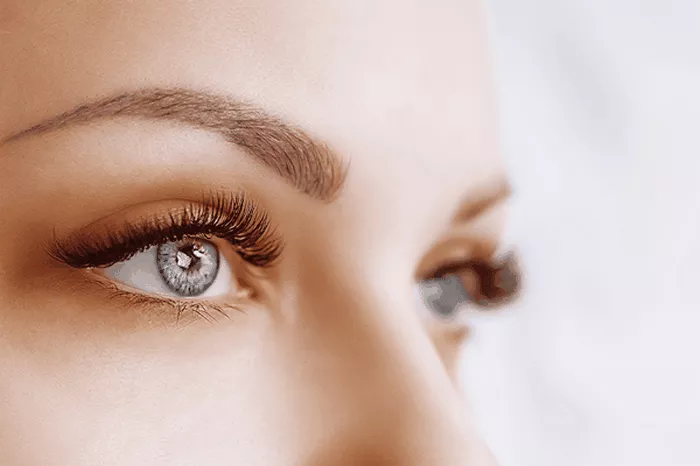Puffy eyes are a common problem that many people experience, whether due to lack of sleep, allergies, or other factors. While there are various remedies available, one simple and effective way to reduce puffy eyes is to use ice. In this article, we will explore how to get rid of puffy eyes with ice, why it works, and some tips for using ice to reduce puffiness.
Why get rid of puffy eyes with ice?
Puffy eyes can be caused by a variety of factors, including lack of sleep, allergies, dehydration, and aging. When the skin around the eyes becomes swollen and inflamed, it can create a tired, aged appearance. Using ice to reduce puffiness is a simple and effective way to alleviate these symptoms.
Ice works by constricting blood vessels and reducing inflammation, which can help to reduce swelling and puffiness around the eyes. Additionally, the cold temperature of the ice can help to tighten and firm the skin, creating a more youthful and refreshed appearance.
How to get rid of puffy eyes with ice
There are several ways to use ice to reduce puffy eyes. Here are some of the most effective methods:
Ice pack: One of the simplest ways to use ice to reduce puffiness is to apply a cold compress or ice pack to the affected area. Simply wrap a few ice cubes in a clean cloth or towel, and apply it to the eyes for 10-15 minutes. Repeat as needed throughout the day.
Cold spoons: Another easy way to use ice to reduce puffiness is to use cold spoons. Place a few spoons in the refrigerator or freezer for a few minutes, then place them over the eyes for a few minutes. Repeat as needed throughout the day.
Frozen vegetables: If you don’t have an ice pack or spoons, you can also use frozen vegetables, such as peas or corn, to reduce puffiness. Simply wrap the frozen vegetables in a clean cloth or towel, and apply them to the eyes for 10-15 minutes.
Tips for using ice to reduce puffiness
While using ice to reduce puffiness is generally safe and effective, there are some tips to keep in mind to ensure the best results:
Use a barrier: When using ice directly on the skin, it’s important to use a barrier, such as a clean cloth or towel, to prevent skin irritation or damage. Never apply ice directly to the skin.
Don’t overdo it: While ice can be effective in reducing puffiness, it’s important not to overdo it. Applying ice for too long or too frequently can actually cause more harm than good, and can damage the delicate skin around the eyes.
Be gentle: When applying ice to the eyes, be gentle and avoid rubbing or pulling on the skin. This can cause further irritation and damage.
Combine with other remedies: While ice can be effective on its own, combining it with other remedies, such as cucumber slices or tea bags, can enhance its effectiveness and provide additional benefits.
Conclusion
Puffy eyes can be a frustrating and uncomfortable problem, but using ice to reduce puffiness is a simple and effective solution. By constricting blood vessels and reducing inflammation, ice can help to reduce swelling and puffiness around the eyes, creating a more youthful and refreshed appearance. However, it’s important to use ice safely and effectively, and to combine it with other remedies for the best results. By following these tips and techniques, you can get rid of puffy eyes with ice and enjoy a more refreshed, rejuvenated appearance.
FAQs
1. Does putting ice on puffy eyes work?
Yes, applying ice or a cold compress to puffy eyes can help reduce swelling and inflammation by constricting blood vessels in the area. The cold temperature helps numb the area and temporarily tightens the skin, reducing puffiness and providing relief. However, it’s essential to wrap the ice pack or cold compress in a cloth to prevent direct contact with the skin, which could cause ice burns or frostbite.
2. Can ice help a swollen eye go down?
Yes, ice can help reduce swelling and alleviate discomfort associated with swollen eyes. The cold temperature constricts blood vessels and reduces blood flow to the area, effectively decreasing inflammation and puffiness. Applying ice or a cold compress for short periods can provide immediate relief, but it’s essential to avoid prolonged exposure to prevent skin damage.
3. How long to keep cold compress on puffy eyes?
It’s recommended to apply a cold compress or ice pack to puffy eyes for about 10 to 15 minutes at a time. Take breaks between applications to prevent skin irritation or discomfort. Additionally, ensure the cold compress is wrapped in a soft cloth to avoid direct contact with the skin and protect the delicate eye area.
4. Does cold water make puffy eyes go away?
Rinsing the eyes with cold water can temporarily reduce puffiness by constricting blood vessels and tightening the skin. Splashing cold water on the face or using a cold water compress can provide immediate relief and help diminish the appearance of swollen eyes. However, for long-term reduction of puffy eyes, it’s essential to address underlying causes such as lack of sleep, allergies, or fluid retention.

